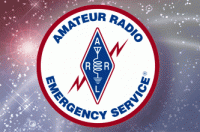|
Welcome,
Guest
|
TOPIC:
CA: Hospital Loses Telephone Service! 7 years 4 months ago #755
|
For a California ARES Hospital Communications Group, it gets real after participating in a major statewide medical drill
The 2016 Statewide Medical and Health Exercise took place on November 17. And, was scarcely over for a month when the Hospital Disaster Support Communications System (HDSCS) - a specialized ARES group in Orange County, California - was called out for the real thing. On Monday, December 12, around 1:15 PM, phones went down at Anaheim Global Medical Center. In accordance with the hospital emergency plan, HDSCS was contacted using the HDSCS Call-Up sheet. The hospital's assistant disaster coordinator informed the HDSCS contact of the problem and the request for multiple operators to back-up communications. A call over a local repeater used by HDSCS yielded two operators ready to put the system into action. Within a few minutes, a base station was established and a lead communicator was on his way to the hospital. The base station and an assistant emergency coordinator made calls using the HDSCS "First Wave" sheet. Over the next 15 minutes, another three operators were identified and began their responses to the hospital. An additional three operators were contacted in case more would be needed and indicated their availability. - As the first operator arrived, a hospital command center had been established. - In under an hour, four communicators were on site with one operator staying in contact with the base station and the other three backing up internal communications. Training in Hospital Incident Command System protocols was helpful for the radio operators in working with the ICS 213 and 214 Forms and the hospital staff knowing about the job action sheet preferred by Orange County hospitals. While this facility did have a back-up phone system that provided some coverage for the most critical departments and some hand-held radios, the radio amateurs were also wanted. While some patient care staff could make a call on a hand-held radio, they couldn't always listen and preferred the HDSCS operators to handle communications. A relief operator, identified from the initial call-up, did come on site about 4 1/2 hours into the incident. The system was declared stable just over 6 hours after the activation. And with that, the communicators on site were asked to participate in the debriefing with the hospital staff. This phone outage was the 123rd emergency and the 97th phone outage to which HDSCS has responded since 1980. - April Moell, WA6OPS, District Emergency Coordinator, ARRL Orange Section, ARES Hospital Disaster Support Communications System Moell added this commentary: "Many groups may drill with hospitals. But, typically the hams show up prior to the start of the drill. And, when the activity starts, everyone is already in place. That is not the real world case when it hits the fan. The fact that we are always, and I mean always, making sure hospitals have current activation procedures and names (more than one), is why we have had timely responses to our hospitals over the years. We were on site before the phone technicians were in this incident, and it's not the first time. Our "First Wave" sheets really help make call-up more efficient. Our first calls are to those who are closer and most likely available at certain times of day to hospitals. Being educated about hospitals and EMS organization and disaster plans make us valuable additions to the hospitals in the little and big disasters." SOURCE: www.arrl.org/ares-el?issue=2016-12-21 |
|
Please Log in or Create an account to join the conversation.
Last edit: by WA1SFH.
|
Time to create page: 0.118 seconds
